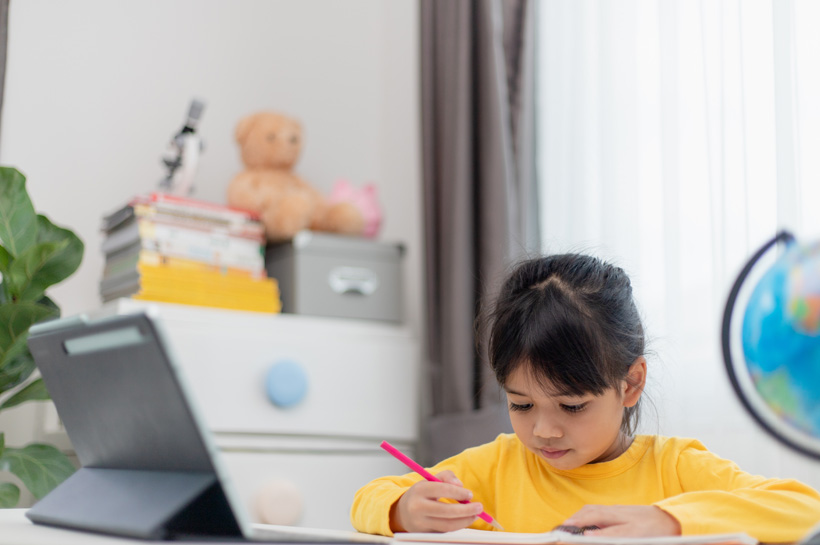“Home is where the heart is—and the homework!”
As students navigate the new landscape of learning at home, establishing an effective study environment is crucial. With a blend of structure and a touch of humor, you can transform your home into an inspiring space for academic success. Let’s explore some strategies that will make your learning experience both productive and enjoyable —because who said studying has to be boring?
1. Designate Your Learning Space
First and foremost, create a dedicated study area. Think of this as your personal command centre where distractions are kept at bay and focus reigns supreme. Whether it’s a quiet corner of your room or a cozy spot at the dining table, ensure that it’s a space conducive to concentration. Optimizing the home learning environment is key to staying productive.

Pro Tip: Personalize your space with inspiring quotes or motivational posters. Just steer clear of anything that might distract you—like a photo of a cat lounging comfortably, which might make you wonder if you too could master the art of napping!
2. Establish a Routine
A consistent schedule can work wonders in maintaining your focus. Design a daily timetable that includes study blocks, breaks, and some leisure time. This structure is one of the most effective learning strategies for parents to guide their children through home-based learning. Avoid the all-too-familiar trap of “I’ll just watch one more episode” morphing into a binge-watching marathon.
Humorous Insight: If you catch yourself negotiating with your study schedule, remember, procrastination is like a credit card—fun in the beginning, but you’ll pay for it later!

3. Incorporate Variety
Sticking to one method of studying can turn even the most enthusiastic learner into a grump. Instead, mix it up: switch between reading, watching educational videos, and engaging in hands-on projects. This keeps your brain engaged and boosts academic retention.
Creative Idea: Turn your study sessions into a game. Create a trivia challenge based on the material you’re learning. Just be prepared for the inevitable debate about whether “trivia” is pronounced with a long “i” or a short one—your friends will definitely have opinions!

4. Take Regular Breaks
Breaks are essential for maintaining mental clarity. Use this time to stretch, grab a healthy snack, or engage in a brief walk around the house. Just remember not to lose track of time—your five-minute break can easily transform into a Netflix episode.
Funny Reminder: When your family asks what you did during your break, confidently declare you were “in deep contemplation” over whether pineapple belongs on pizza!

5. Connect with Peers
Home-based education doesn’t have to be a solitary endeavor. Establish virtual study groups with classmates to discuss assignments or tackle challenging concepts together. Parental guidance for student success often includes encouraging social interaction to stimulate learning.

6. Embrace Mistakes
Finally, remember that making mistakes is an integral part of learning. Rather than viewing errors as failures, treat them as opportunities for growth. Each misstep is a stepping stone on your path to boosting academic performance.
Cheeky Tip: Consider creating a “Wall of Fame” for your mistakes. Each error becomes a badge of honor, showing that you’ve dared to venture outside your comfort zone—after all, even the most successful people have had their fair share of blunders.
“Success is not final; failure is not fatal: It is the courage to continue that counts.” — Winston S. Churchill
By incorporating these strategies, you can enhance your learning at home experience. So, gather your supplies, equip yourself with a sense of humor, and get ready to conquer your studies. Remember, learning is a journey—so why not enjoy the ride?
Harika Mothukuri
Middle School Teacher

